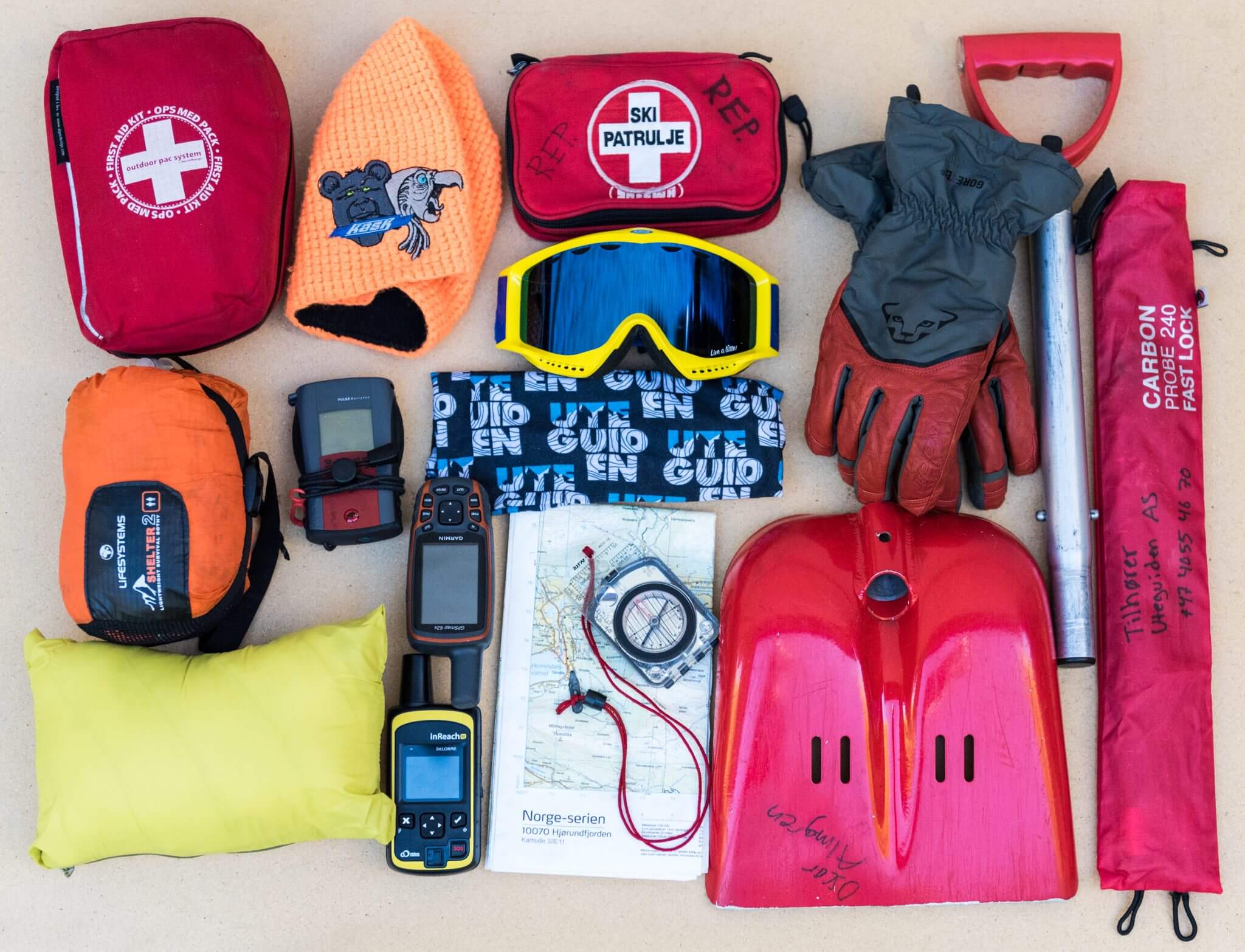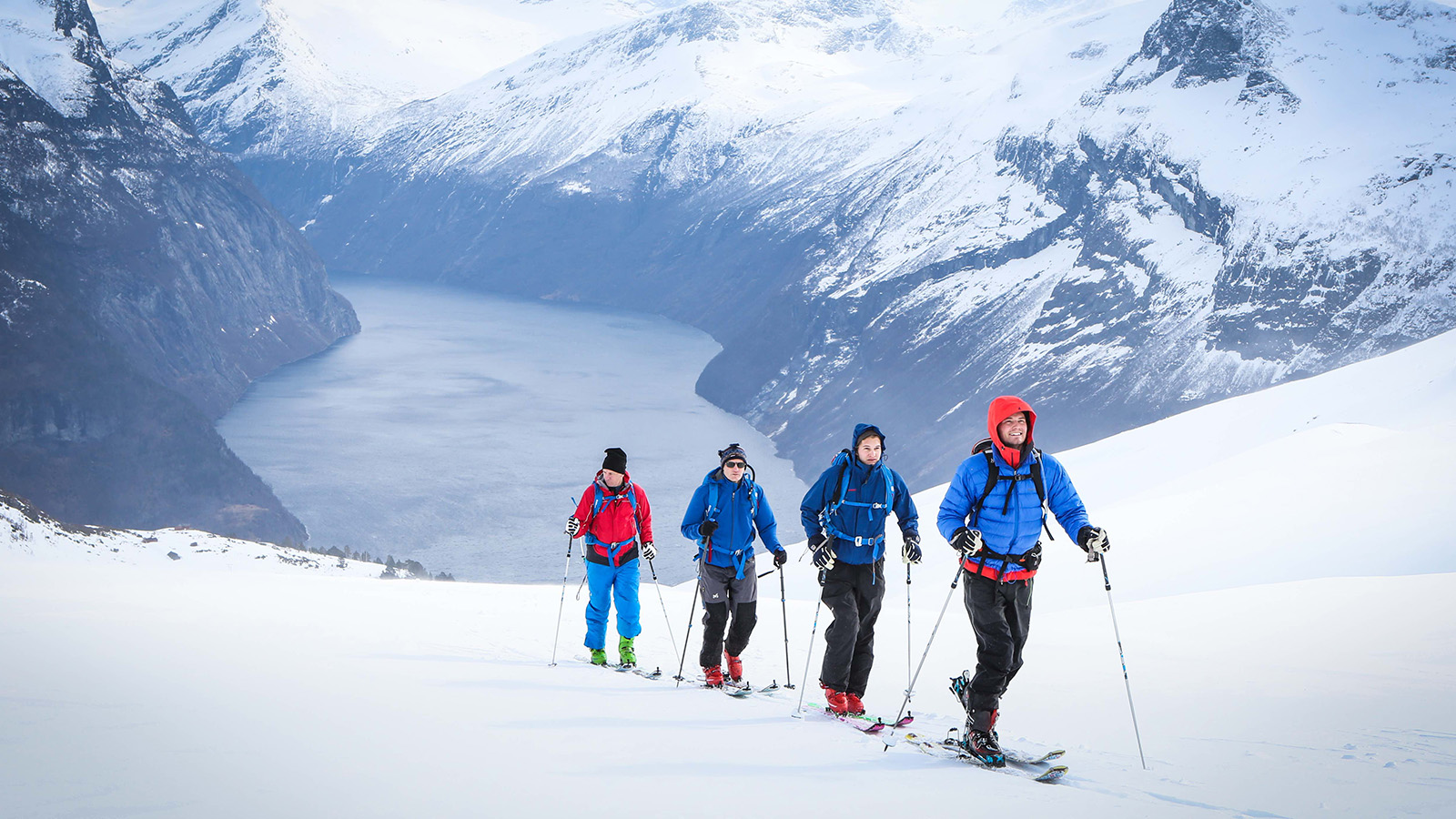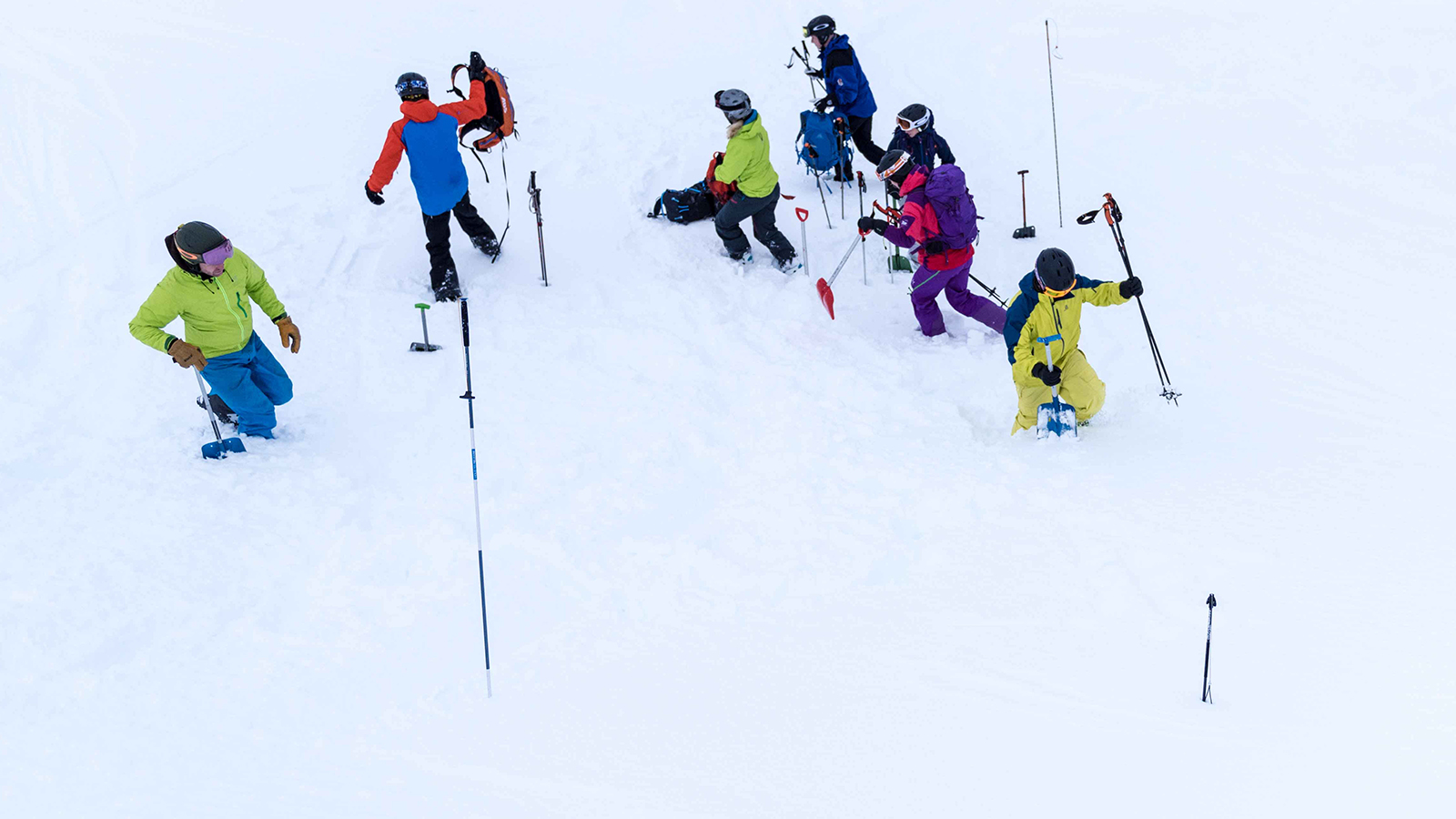Avalanche Gear Info with Uteguiden
The essentials you need in the backcountry
If you’re heading out ski touring or riding off-piste, you must always carry an avalanche transceiver (on your body), a shovel, and a probe in your pack—and know how to use them. These three items are non-negotiable if you want any chance of saving your partner in an avalanche. Missing just one can have major consequences for a rescue.
A good rule of thumb is ASSS – Always: Avalanche transceiver, Shovel, Probe (ref. K. Brattlien).
Avalanche transceivers
An avalanche transceiver both transmits and receives signals from other devices. All transceivers on the market transmit on the same frequency, so they can “talk” to each other. Note that they cannot detect RECCO reflectors or mobile phones.
Modern transceivers are digital, with 2–3 antennas. These units process signals for you and provide clear direction and distance to a buried victim. Older, analog models only send out sound signals and use a single antenna—like a frustrating game of “hot or cold.” If you’re still using an analog beacon, it’s strongly recommended to upgrade to a 3-antenna digital model.
No matter which model you buy, the most important thing is to practice regularly. The time of an accident is not the time to learn.
Life-saving tips for transceiver use
- Always wear the transceiver on your body (harness or zippered pants pocket), never in your pack.
- Keep at least 20 cm between your transceiver and electronic devices (phone, GPS, GoPro, etc.) when in send mode.
- Keep at least 50 cm distance in search mode.
- Replace batteries when they drop below 60%.
What avalanche gear should I buy?
Transceiver
- Must be digital (all new ones are). Digital beacons provide direction and distance—something analog units cannot.
- Look for a flagging/masking function to mark multiple burials.
- Choose one that’s intuitive and easy to handle, even with gloves on.
Shovel
- Must have an aluminum blade—plastic blades can and will break when you need them most.
- A telescopic handle makes digging easier, especially if you’re tall.
- Don’t skimp here: cheap shovels break.
Probe
- A length of 240 cm works well for most backcountry use.
- Should have a quick-lock system for fast deployment.
- Steel cable is more durable than cord.
Why buy an avalanche airbag?
An avalanche airbag increases your volume, keeping you higher in the snowpack and reducing the chance of full burial. About 75% of avalanche fatalities are due to suffocation, so reducing burial depth greatly increases survival odds. Studies suggest airbags can cut avalanche mortality roughly in half—provided you make the same decisions with or without one.
Some systems, like Mammut’s Protection Airbag, also add trauma protection by shielding your head from impacts.
Important: An airbag is never a substitute for avalanche knowledge. It only makes a difference when combined with proper training. If you’re deciding between buying an airbag or taking a course—choose the course. Knowledge saves lives.
























